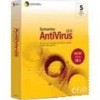Symantec 10551441 Administration Guide - Page 193
Working with Histories and Event Logs, About Histories and Event Logs
 |
UPC - 037648270472
View all Symantec 10551441 manuals
Add to My Manuals
Save this manual to your list of manuals |
Page 193 highlights
7 Chapter Working with Histories and Event Logs This chapter includes the following topics: ■ About Histories and Event Logs ■ Sorting and filtering History and Event Log data ■ Viewing Histories ■ Forwarding client logs to parent servers ■ Deleting Histories and Event Logs About Histories and Event Logs Histories and Event Logs offer a central view of virus and other threat activity and scanning on your network. Using the Symantec System Center, you can do the following: ■ View data at the server group, server, or individual managed workstation level. In addition, each Symantec AntiVirus client stores its own Event Log data locally. The data is viewable from the Symantec AntiVirus client user interface. ■ Sort and filter History and Event Log data. ■ Perform actions based on History and Event Log data. For example, if a Threat History displays a virus found, you can perform actions such as repairing the virus or moving the infected file to the Central Quarantine. ■ Export data to Microsoft Access (as an .mdb file) or in comma-separated value (CSV) format. ■ Remove History and Event Log data.















